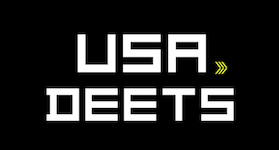
Ever wonder about the stuff that businesses keep in stock? You know, all those products sitting on shelves or piled up in warehouses? Well, that’s what we call inventory. But here’s the kicker: not all inventory is created equal. Some can be a real asset, while others might feel more like a liability. Let’s dive in and break it down.
Is Inventory an Asset or a Liability?
Inventory can be both an asset and a liability, depending on the context and how it’s managed. Here’s a breakdown:
As an Asset:
- Represents potential revenue: Unsold inventory holds the potential to be sold and generate income for the business.
- Increases customer satisfaction: Having enough inventory ensures a smooth flow of goods and avoids stockouts, leading to satisfied customers.
- Provides a buffer against demand fluctuations: Having some level of inventory allows you to adapt to unexpected changes in demand without impacting sales.
As a Liability:
- Ties up cash: Investing in inventory means tying up funds that could be used for other purposes, like marketing or expansion.
- Risks of obsolescence: Products can become outdated or unpopular, leading to write-offs and lost revenue.
- Storage costs: Storing inventory often incurs costs for space, security, and insurance.
- Risk of damage or loss: Theft, spoilage, or natural disasters can cause inventory loss, impacting finances and operations.
Therefore, inventory becomes a liability when its drawbacks outweigh its benefits. This can happen due to:
- Excessive inventory: Holding onto more inventory than needed increases storage costs and the risk of obsolescence.
- Poor demand forecasting: Inaccurate predictions can lead to either stockouts or overstocking, both affecting profitability.
- Inefficient inventory management: Lack of control over inventory levels and movement can lead to higher costs and lost opportunities.
When is Inventory Considered an Asset?
Inventory is generally considered an asset when it meets three key criteria:
1. Control: Your business needs to have full control and ownership over the inventory. This means it’s readily available and can be sold in the normal course of business. Consigned goods, for example, wouldn’t qualify as your asset since you don’t fully own them.
2. Measurable Cost: The inventory must have a clearly defined acquisition cost, which can be objectively measured and documented. This allows you to accurately value it on your financial statements.
3. Future Benefit: There’s a reasonable expectation that the inventory can be converted into cash through sale, generating future economic benefit for your business. This means it’s not obsolete, damaged, or nearing its expiration date.
When Inventory is an Asset (Examples with Calculations):
Scenario 1: Bakery with Fresh Bread
- Cost per loaf: $2
- Inventory: 20 loaves
- Total value: 20 loaves * $2/loaf = $40
Reasoning: This inventory meets all criteria. The bakery owns the bread, its cost is clear, and it’s readily saleable within a day, generating future revenue.
Scenario 2: Clothing Store with Seasonal Apparel
- Cost per dress: $50
- Inventory: 10 dresses
- Total value: 10 dresses * $50/dress = $500
Reasoning: While ownership and cost are clear, these dresses might only be sellable during the season. If the season is nearing its end, the value could be discounted, becoming a potential liability.
Calculations for Liability Risk:
- Discount rate: 20% due to off-season sales
- Potential lost value: $500 * 20% = $100
This example highlights how even inventory meeting asset criteria can become a liability with mismanagement.
Remember: Inventory is dynamic. Its asset/liability status can change based on market conditions, demand fluctuations, and management practices.
When is Inventory Considered a Liability?
Inventory typically transitions from an asset to a liability when it meets several key criteria:
1. Excessive Quantity: Holding onto more inventory than is necessary for regular sales leads to:
- Increased Storage Costs: Renting space, maintaining security, and handling larger volumes incur additional expenses.
- Higher Risk of Obsolescence: Products can go out of style, deteriorate, or become technologically outdated, rendering them unsaleable.
- Tied-up Capital: Cash invested in excessive inventory is unavailable for other crucial business activities like marketing or expansion.
2. Poor Demand Forecasting: Inaccurate predictions can lead to:
- Stockouts: Running out of popular items can lose sales and damage customer relationships.
- Overstocking: Having too much inventory of slow-moving or unpopular items increases all the risks mentioned above.
3. Inefficient Management: Lack of control over inventory movement and proper tracking can lead to:
- Expired or Damaged Inventory: Unmonitored goods can expire, get damaged, or even be stolen, resulting in lost value.
- Inefficient Operations: Difficulty locating specific items can slow down fulfillment and increase labor costs.
4. External Factors: Beyond management control, several external factors can contribute to inventory becoming a liability:
- Changes in Consumer Preferences: Unexpected shifts in tastes can leave certain products unsold.
- Economic Downturns: Reduced consumer spending can lead to overstock and unsold inventory.
- Supply Chain Disruptions: Delays or shortages can impact production and sales, making held inventory less valuable.
Calculating the Liability Impact:
While quantifying the exact impact requires specific data, here’s a simplified example:
- Storage Cost per Item: $1 per month
- Excess Inventory: 100 items
- Additional Storage Cost: $1/item/month * 100 items = $100 per month
- Annualized Cost: $100/month * 12 months = $1,200
This is just one aspect of the potential liability. Remember, obsolescence and lost sales can further amplify the negative impact.
Remember: It’s not just about the quantity of inventory, but also how efficiently it’s managed and aligned with market demand. Implementing strategies like just-in-time (JIT) inventory, accurate forecasting, and regular inventory reviews can minimize the risk of inventory becoming a liability and ensure it remains a valuable asset for your business.
Inventory: Asset vs Liability Comparison
| Category | As an Asset | As a Liability | Important Points |
|---|---|---|---|
| Financial Definition | Represents potential future revenue | Ties up cash and incurs costs | Meets criteria of control, measurable cost, future benefit |
| Benefits | Increases customer satisfaction, provides buffer against demand fluctuation | ||
| Costs | None | Storage, obsolescence, risk of damage/loss | |
| Examples | Freshly baked bread, in-season clothing | Overstocked items, outdated products | Excessive inventory in any category can become a liability |
| Management Keys | Optimize inventory levels, accurate demand forecasting, efficient inventory control | Minimize storage costs, avoid overstocking, monitor product shelf life | |
| Financial Statements | Classified as a current asset if readily saleable and part of the operating cycle | Can impact profitability if liabilities outweigh benefits | Careful management minimizes the risk of impacting financial performance |
This table provides a simplified overview. Specific situations may require further analysis.
The distinction between asset and liability can be nuanced, and management actions significantly impact this classification.
Effective inventory management strategies are crucial for maximizing benefits and minimizing liabilities associated with inventory.
Conclusion
Inventory isn’t inherently good or bad – it’s a double-edged sword. Managed well, it fuels sales and generates revenue, making it a valuable asset. But, when excessive, poorly managed, or outdated, it becomes a liability, tying up cash, incurring costs, and jeopardizing profitability.
The key lies in finding the balance: optimize quantities, forecast demand accurately, and implement efficient control systems. Remember, inventory isn’t static, its asset/liability status can shift quickly. Be proactive, manage diligently, and watch your inventory become a powerful driver of your business success!
References
Authentic References for “Inventory Asset or Liability”:
Accounting Standards:
- Financial Accounting Standards Board (FASB): https://www.fasb.org/
- International Accounting Standards Board (IASB): https://www.ifrs.org/
Finance Articles:
- Investopedia: What Is Inventory? https://www.investopedia.com/terms/i/inventory.asp
- Finance Strategists: Is Inventory a Liability or an Asset? https://smallbusiness.chron.com/inventory-asset-liability-43712.html
- WM Synergy: Is your Inventory an Asset or a Liability? https://wm-synergy.com/services/inventory-management/
Inventory Management Resources:
- Supply Chain Management Review: Inventory Management Fundamentals https://www.scmr.com/
- APICS: What is Inventory Management? https://www.ascm.org/learning-development/certifications-credentials/cpim/
- Gartner: 5 Inventory Management Best Practices for the Digital Age https://www.gartner.com/en/documents/4001239
Academic Papers:
- Journal of Business Economics and Management: The Impact of Inventory Management on Firm Performance https://www.researchgate.net/publication/235281090_The_Effect_of_Inventory_Management_on_Firm_Performance
- International Journal of Production Economics: Managing Inventory Risk: A Review of the Literature https://www.sciencedirect.com/topics/economics-econometrics-and-finance/inventory-management
FAQs
Q1. Is inventory a current liability?
No, generally, inventory is classified as a current asset on a company’s balance sheet. This means it’s expected to be converted into cash within a year, through regular sales, and plays a vital role in generating revenue. However, excessive or poorly managed inventory can become a liability due to storage costs, risk of obsolescence, and tied-up cash.
Q2. Why is inventory an important asset?
Inventory serves several crucial functions:
Ensures customer satisfaction: Having enough stock means fulfilling orders promptly, keeping customers happy.
Provides a buffer against demand fluctuations: Unexpected surges are manageable with on-hand inventory.
Generates revenue: Selling inventory is the core business activity for many companies.
Optimizes production: Inventory allows for continuous production without waiting for individual sales.
Q3. Is closing inventory an asset or liability?
Closing inventory refers to the value of unsold goods at the end of an accounting period. It remains an asset as long as it meets the criteria for conversion into cash within a year and has no significant risk of obsolescence or damage.
Q4. Is inventory an income or expense?
Inventory itself is neither income nor expense. It’s an asset representing the cost of goods not yet sold. When items are sold, the cost of goods sold (COGS) expense reflects the portion of inventory used to generate revenue. The remaining inventory value stays on the balance sheet as an asset.







